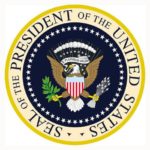The purpose of this activity is to introduce students to the concept of leadership and identify the qualities of a leader. Free registration is required to access the lesson plan.
How a Bill Becomes a Law for AP Gov
A lesson plan for one 80-minute class at the AP level. In it students will identify the main steps in the process of creating and passing legislation:
-Explain the significance of party control and committee work in the Congress in the legislative process
-Identify the role that Congressional leaders such as the House of Representatives and the Senate Majority Leader play in the process of agenda-setting
-Identify the role the President plays in the law-making process
-Explain the reasons why the Founders intended the law-making process to be difficult
From Provocative to Productive: Teaching Controversial Topics
Get first steps for creating a respectful yet vibrant environment for students to explore diverse ideas on controversial topics, from politics to profanity, religion to racism. Four guidelines and a debate leader checklist provide a foundation for those seeking to steer productive conversations about controversial subjects.
Rights in Conflict: The Case of the Professional Tap Dancer
In this lesson, the leader presents students with a situation in which one person’s rights conflict with another’s. The students will identify the problem, suggest solutions, and discuss the potential outcomes of their proposed solutions. The leader encourages students to think about which solutions are most fair, and can use the situation to illustrate the importance of having and adhering to clear rules ahead of time.
Boy Scouts of America v. Dale (2000)
Does a state law forbidding the Boy Scouts from discriminating against a gay scout leader offend rights to free speech and association? This case summary shows how the Supreme Court answered that question in 2000.
The President’s Roles and Responsibilities: Communicating with the President

In order to become informed participants in a democracy, students must learn about the women and men who make decisions concerning their lives, their country, and the world. The president of the United States is one such leader. As a nation, we place no greater responsibility on any one individual than we do on the president. Through several activites, students learn about the roles and responsibilities of the U.S. president and their own roles as citizens of a democracy.
Dr. King’s Dream

In this lesson, students will learn about the life and work of civil rights leader Martin Luther King, Jr. Students will listen to a brief biography, view photographs of the March on Washington, hear a portion of King’s “I Have a Dream” speech, and discuss what King’s words mean to them. Finally, they will create picture books about their own dreams of freedom for Americans today. (Duration: 3 class periods)
Rules, Rules, Rules
In this lesson, students are asked to play a game – passing an object, such as an eraser – in which the rules are unclear and keep changing. Students are then asked to actively reflect on when and why rules are important and necessary. The leader might then connect rules of the game to the rule of law, and discuss the importance of law in our communities and in our society.